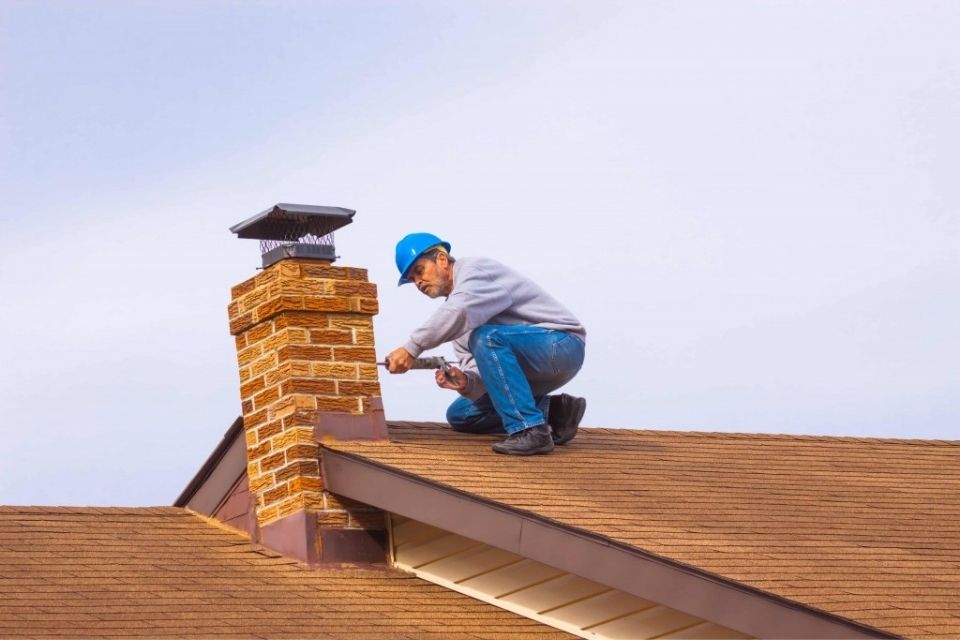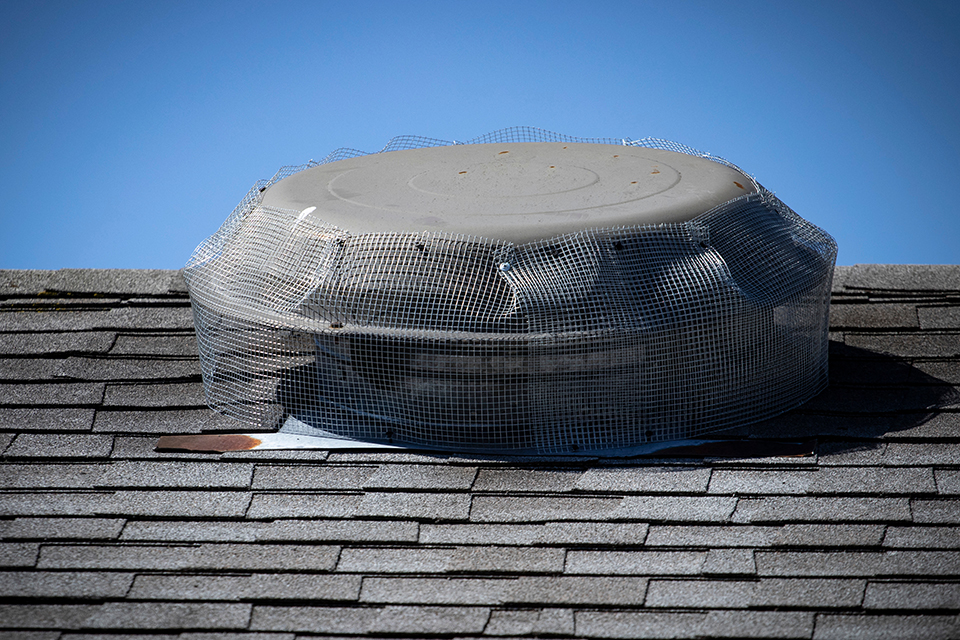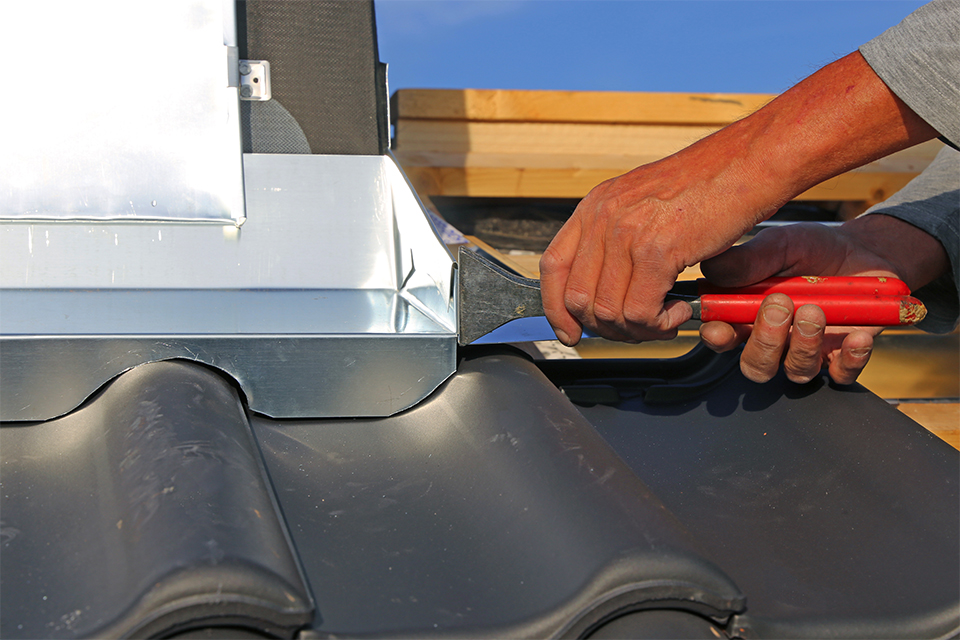How Much Does a Chimney Sweep Cost?
The average price that you can expect to pay for chimney sweeping is around £70-£120. The work will usually be completed by a professional and it should take around 2-3 hours to complete.
An unlined chimney is harder to sweep as they are delicate and prone to damage. Therefore, a chimney sweep for an unlined chimney may cost more. If this is the case, then expect to pay around £50-£100 more for the work, depending on the condition of the chimney.

So what is the cost of chimney sweeping?
Chimney sweeping prices will vary depending on several factors including the type of chimney you have, the difficulty of the job, the current state of your chimney, and your location in the UK.
Chimney sweeping prices tend to be higher in the London area when compared to other UK regions.
If you're wondering about the costs of chimney sweeping, in this article, we will take a look at all of the costs that may come up with chimney sweeping.
This includes the labour costs, material costs, and any additional costs that may come up with this type of work.
Unlined chimneys tend to be more difficult to sweep.
Chimney Sweep Prices
The table below highlights the costs that you can expect for different types of chimney sweeping jobs:
| Job Description | Average Cost |
|---|---|
| Chimney sweeping on a open fire chimney cost | £60-£100 |
| Chimney sweeping on a lined stove chimney cost | £80-£120 |
| Chimney sweeping on an unlined stove chimney cost | £90-£150 |
What are the Supply Costs of Chimney Sweeping?
Chimney sweeping supply costs will usually only be of interest if you are planning on sweeping the chimney yourself, or you want a breakdown of the costs when receiving a quote.
It's important to note that DIY chimney sweeping isn't recommended, as even if you have the confidence, it can become dangerous due to being exposed to creosote and potentially to inhale soot, not to mention the risk of falling when working from height.
If you already have experience in the work and you have the appropriate safety equipment, then you may be able to sweep the chimney yourself, although hiring a professional is the most sensible option.
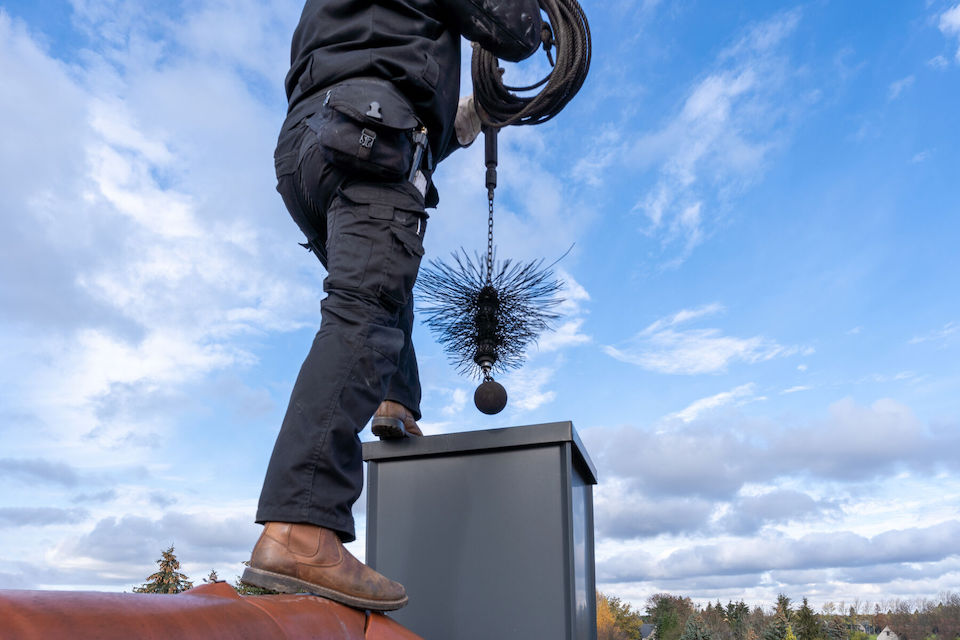
The table below shows the estimated costs for various chimney sweeping tools:
| TYPE OF CHIMNEY SWEEPING EQUIPMENT | Average Cost |
|---|---|
| Chimney sweeping brushes (basic) | £20-£40 |
| Chimney sweeping brushes (professional) | £180-£270 |
| Dust shovel | £4-£10 |
| Hand brush | £2-£8 |
| Telescopic mirror | £5-£10 |
| Smoke pellets | £22-£25 |
| Dust sheets | £15-£50 |
What are the Additional Costs of Chimney Sweeping?
There are several additional costs that you may need to think about when it comes to chimney sweeping. Below is a list of the additional costs that may come up with this type of work:
Removing a Chimney Breast
If you no longer need a chimney and want to have it removed, then you will need to hire a professional to complete this work. This is quite a large job that shouldn’t be attempted as a DIY project.
The cost for this work will vary depending on your type of chimney, the ease of access, and the difficulty of the job. On average, you can expect to pay around £2200-£3500 for a chimney breast removal.
However, you may need to include structural engineer fees into your budget or the hire of an experienced builder with the correct qualifications, to assess and approve the project before and after its completion. This will ensure the job is carried out in line with any relevant building regulations and the work can be signed off.
Chimney Repairs
If your chimney sweeper identifies any problems with your chimney during the cleaning process, then you may need to have some chimney repairs carried out. The average cost of which will depend on the type of work that needs to be completed.

A professional chimney contractor will charge around £18-£25 per hour to do repairs on your chimney. Depending on the problem, you may need to buy materials for the job too. The cost for these will vary depending on what the problem is.
Tradesmen Costs for Chimney Sweeping
When it comes to chimney sweeping, you will most likely be interested in the labour costs for the work as it’s not really a job that should be completed as a DIY project. In this section, we will take a look at the labour costs for this type of work.
A budget chimney sweep on an open fire should cost around £60-£70 in labour costs. If you are looking for a chimney sweep on an unlined chimney, this will usually cost around £90-£150 to complete. Prices in the South East are likely to be at the top end of this price range, while London may be slightly higher due to labour fees being higher in general.
A budget chimney sweep on an open fire typically costs around £60-£80 in labour costs. For an unlined chimney sweep, prices usually range from £90-£150. Costs in the South East tend to be at the top end of these price ranges, with London often slightly higher due to increased labour fees and other additional expenses.

Sometimes, there may be some additional work needed to complete the chimney sweep. This will increase the labour costs. For example, bird nests can be a problem and will need to be removed. This can add an additional £20-£40 onto the labour costs.
Those based in London can expect to pay around £30-£50 more for a chimney sweep than other parts of the UK.
How Long Does It Take to Sweep a Chimney?
The time it takes to sweep a chimney will depend mostly on the type of chimney that you have, the ease of access, the level of dirt in the chimney, and whether any additional work is needed to complete the sweep.
If you are looking for a budget chimney sweep on an open fire, then this will usually take around an hour to complete. If you are looking for a chimney sweep on an unlined chimney, this will usually take around 1-2 hours to complete.
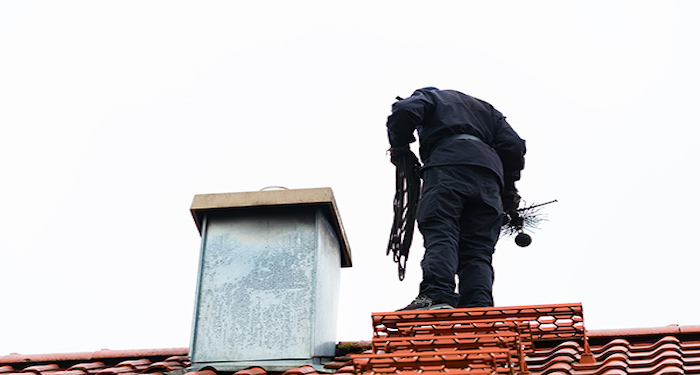
If there is any additional work needed such as removing bird nests, then this can add some extra time onto the work. The extra time may be around 1-2 hours on top of the chimney sweep depending on how difficult it is to remove.
Types of Chimney Sweeping
There are two major types of chimney sweeping – a traditional chimney sweep and a power chimney sweep. In this section, we will take a look at these two types of chimney sweeping in more detail:
Traditional Chimney Sweeping Costs
A traditional chimney sweeping method uses a round brush that is attached to a rod. This brush is usually around a metre in length.
The brush is pushed up inside the chimney flue and pulled down several times. This motion makes the brush rub up against the sides of the chimney flue. The soot is dislodged and falls down the chimney where it will then be vacuumed away.
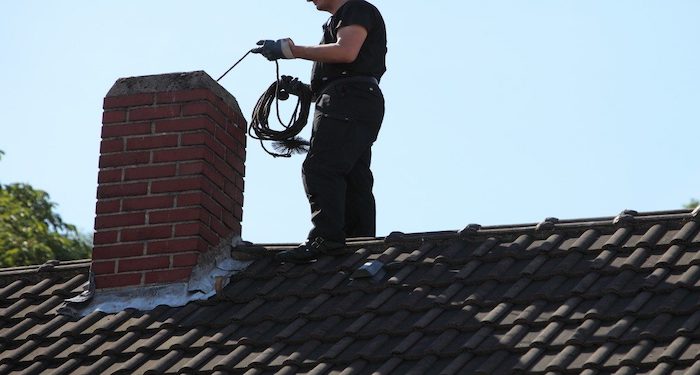
So that the brush can travel and clean the full length of the flue, it will be attached to several detachable rods. A typical flue length is usually around 8-10 metres. This method of chimney sweeping is best for older properties where the condition of the flue tends to be weaker.
A gentle approach is best for these properties as you don’t want to remove any of the rendering from inside the flue. The average cost of a simple brush sweep is around £50-£100.
Pros
- ✔ Effective when done regularly
- ✔ Gentle on older of fragile chimneys
- ✔ Less likely to cause internal damage
- ✔ Usually more affordable than power sweeping
Cons
- ✖ Manual sweeping can be time consuming
- ✖ Harder to remove a heavy build-up of creosote
- ✖ Not as thorough as power sweeping
Power Chimney Sweeping Costs
With the advancement of new technology, you can now get a power chimney sweep. Power sweeping involves a different type of brush that is shaped like a spider.
The sweeping head is made from thick nylon strands rather than thin bristles like traditional brushes. The head on a power brush rotates at speed.
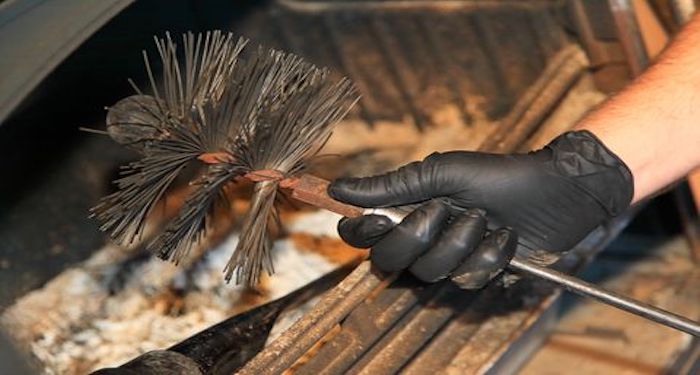
Power sweeping is much more effective at removing soot and creosote. However, since the brush is powered, this type of sweeping may damage an older flue as it may remove some rendering. Therefore, this type of chimney sweeping is best on newer homes.
This type of chimney sweeping usually costs around £60-£120 on average.
Pros
- ✔ Good at removing a heavy build-up of soot and creosote
- ✔ Faster and more thorough process than traditional sweeping
- ✔ Ideal for modern chimneys with chimney liners
- ✔ Easier to adapt to more complicated shapes and sizes
Cons
- ✖ Can potentially damage older or fragile chimneys
- ✖ Usually more expensive than traditional sweeping
- ✖ Requires experience to avoid stripping the lining
How to Tell If Your Chimney Needs Sweeping
If you're not sure when your chimney was last swept, there are a few signs to look for that may indicate it's time to do so:
- Soot becomes visible around the fireplace
- Unusual odours are coming from the fireplace
- The fire isn't working as well as usual
- Smoke backing into the room when lighting the fire
- Cracked or damaged chimney liners
- Sound of trapped birds or falling debris
Benefits of Chimney Sweeping
There are many benefits to have your chimney swept. Below is a list of the main benefits of this type of work:
Prevents Blockages
If you have a fire that burns fossil fuels, then your chimney will start to collect soot residue. This will build up and stick to the flue every time you light your fireplace.
If you sweep your chimney, you can prevent creosote from blocking your chimney. The sooner you have it removed, the easier it will be to get the job done.
Any creosote that is left can become highly flammable and it can be hard to remove. So with this in mind, you should have a professional chimney sweep regularly to prevent blockages.
Prevents Expensive Repairs
If you leave your chimney to collect soot, then this can be very dangerous and can result in an inefficient fire. If your chimney collects a large amount of creosote, this can be very difficult to remove and the removal can become costly.
Leaving soot and tar to build up in the chimney can also lead to cracking and structural damage. This can be very expensive to repair, so the more frequently you can have your chimney swept, the better.
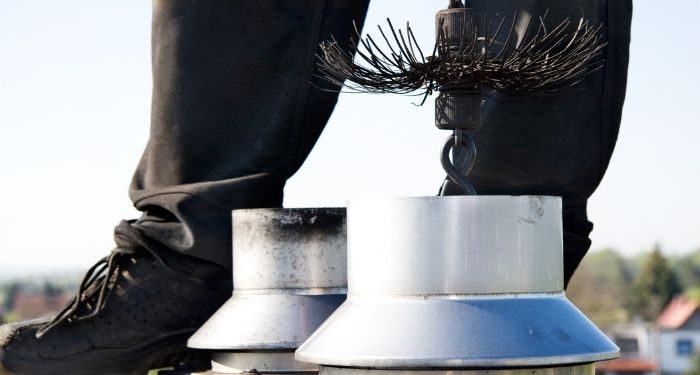
Efficient Heating
When you get a build-up of creosote in your chimney, this causes your fireplace’s efficiency to decrease. This will result in you using more coal, wood, or fuel for your fire.
The best solution to keeping your fireplace as efficient as possible is to have your chimney swept regularly.
Health and Safety
One of the main advantages of having your chimney swept regularly is that you can keep your family and your home safe from toxic chemicals such as carbon monoxide. Chimney sweeping will allow your chimney to work exactly as it should.
If you want to prevent harmful fumes from entering the home through your fireplace and make your home a safer and healthier place, then you should ensure that you get your chimney swept regularly.
FAQs
Q: How often does a chimney need to be swept?
A: The frequency depends on the type of fire and fuel used. Chimneys burning wood or coal should be swept at least twice a year due to the buildup of soot and creosote. If the fireplace is used more frequently than usual, sweeping may be required once a quarter to ensure safety and efficiency. However, if you are using fuels that don't produce any smoke, it's recommended to clean your chimney just once a year.
Q: Is chimney sweeping a messy process?
A: Chimney sweeping can be a messy process. However, a professional chimney sweeper will take care to leave as little mess behind as possible. They will use procedures to prevent dust from escaping during the process of the sweep. However, it can be difficult for the sweeper to guarantee that there will be no mess at all.
Q: How do I prepare for a chimney sweep?
A: In most cases, all you need to do is make sure you have a clear passage to the chimney and ensure that there is plenty of room. You should also clear away any ornaments from around the fireplace in case they get accidentally broken. A gas fire should be turned off for at least 24 hours before the sweep as these take a long time to cool down.




